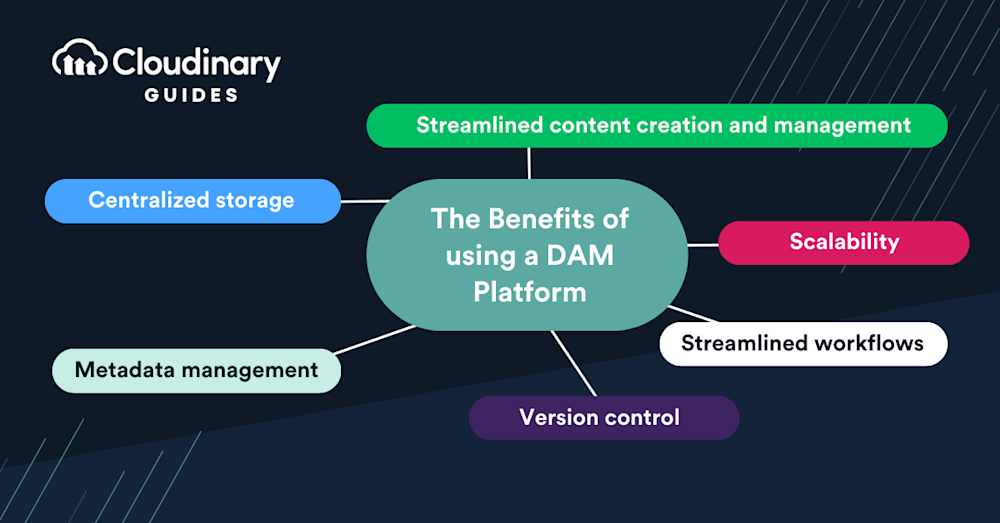Maximize Your Brand’s Potential with High-Quality Content and Effective Management Strategies
In today’s fast-paced digital world, the importance of digital assets in marketing cannot be overstated. From social media posts to infographics, these valuable resources help create a robust online presence and play a crucial role in engaging your target audience and driving business growth. Digital assets, which include various forms of content such as images, videos, written materials, and audio files, are the building blocks of a successful marketing strategy in the digital age.
A recent report by HubSpot revealed that 70% of marketers are actively investing in content marketing, a clear indication of the growing significance of digital assets in the industry. As we delve deeper into this fascinating topic, we will explore the different types of digital assets and how they can dramatically improve your marketing campaigns. So, buckle up and get ready to unlock the full potential of digital assets in your marketing efforts!
What Are Digital Assets?
Digital assets are a broad category of digital files or content that hold value for individuals or businesses. In marketing, these assets encompass various creative materials used to promote a brand, engage with audiences, and drive conversions. These assets are pivotal in shaping a brand’s identity and building a strong online presence, making them an essential component of any modern marketing strategy.
Benefits of Digital Assets in Marketing
Incorporating digital assets into your marketing strategy offers a multitude of advantages that can elevate your brand and improve your overall marketing efforts. Some of the key benefits include:
- Enhanced brand presence. High-quality digital assets help create a consistent and memorable brand identity across various platforms, making it easier for your audience to recognize and connect with your brand.
- Cost-effective marketing strategy. Digital assets can be repurposed and shared across multiple channels, allowing you to reach a wider audience without incurring additional costs for creating new content.
- Increased audience engagement. Engaging digital assets, such as interactive content and visually appealing images, can capture your audience’s attention and encourage them to interact with your brand.
- Improved SEO and online visibility. Well-structured and optimized digital assets can boost your search engine rankings, making it easier for potential customers to find your brand online.
- Streamlined content creation and management. Organized and easily accessible digital assets simplify the content creation process and enable efficient collaboration among team members, saving time and resources.
By leveraging these benefits, you can create a powerful and effective marketing strategy that drives results and helps your brand thrive in the competitive digital landscape.
Types of Digital Assets in Marketing
A diverse range of digital assets can be used in marketing to reach and engage with your target audience effectively. By understanding each type’s unique characteristics and strengths, you can create a well-rounded marketing strategy that effectively promotes your brand.
Images and Graphics
Images and graphics are powerful visual elements that instantly capture your audience’s attention. They include logos, infographics, product photos, and custom illustrations. By using high-quality and visually appealing images, you can convey your brand’s message and personality, create a lasting impression, and enhance the overall aesthetic of your marketing materials. Graphics like infographics can also help simplify complex information and make it more accessible to your audience.
Video
Videos offer an engaging and immersive experience, making them an excellent medium for storytelling and demonstrating your products or services. Types of videos used in marketing include promotional clips, explainer videos, testimonials, and live streams. Videos can communicate complex ideas more effectively than text and evoke emotions that resonate with your audience. They also have the potential to go viral, significantly increasing your brand’s reach and visibility.
Written Content
Written content is a cornerstone of content marketing, providing valuable information to your audience and establishing your brand as an industry expert. This type of digital asset includes blog posts, articles, whitepapers, and e-books. Well-crafted written content can improve your search engine rankings through SEO optimization, driving organic traffic to your website and generating leads. It also helps build trust and credibility with your audience, encouraging them to engage with your brand and become loyal customers.
Social Media Content
Social media content is essential for building a strong online presence and connecting with your audience on a more personal level. This type of digital asset includes posts, stories, tweets, and other content created specifically for social media platforms. By sharing engaging and relevant content on social media, you can reach a wider audience, foster a sense of community around your brand, and encourage user-generated content. Social media content also allows for real-time interaction with your audience, providing valuable insights and feedback to inform your marketing strategy.
Audio Content
Audio content offers a unique way for your audience to consume information and connect with your brand. This digital asset includes podcasts, voiceovers, and audio versions of written content. Audio content is particularly suited to on-the-go consumption, allowing your audience to engage with your brand while commuting, exercising, or multitasking. Podcasts, in particular, have gained popularity in recent years, allowing brands to reach new audiences and establish thought leadership in their industry.
Best Practices for Managing Digital Assets
Effectively managing your digital assets is crucial for maximizing their value and streamlining your marketing efforts. By implementing best practices, you can ensure your assets are easily accessible, up-to-date, and compliant with usage rights.
Organize and Categorize Assets
Organizing and categorizing your digital assets is essential for efficient retrieval and usage. Create a clear folder structure and use consistent naming conventions to make it easy for team members to locate and identify assets quickly.
Use a Digital Asset Management (DAM) System
A DAM system can help centralize, organize, and manage your digital assets more effectively. DAM systems offer advanced search capabilities, version control, and access permissions, ensuring your team can easily find and use the right assets.
Implement Metadata and Tagging
Adding metadata and tags to your digital assets can improve searchability and provide valuable context for users. Include relevant information, such as asset type, creation date, and author, to help team members quickly understand the asset’s purpose and usage.
Ensure Proper Licensing and Usage Rights
It’s crucial to ensure that your digital assets are properly licensed and that you adhere to usage rights. Keep track of licensing agreements, expiration dates, and usage restrictions to avoid legal issues and potential fines.
Regularly Update and Archive Assets
Regularly review and update your digital assets to maintain their relevance and usefulness. Remove outdated or obsolete assets and archive them to reduce clutter and ensure your team is working with the most current and accurate resources.
Measuring the Effectiveness of Digital Assets
To ensure your digital assets contribute to your marketing goals, measuring their effectiveness and making data-driven decisions is essential. By closely monitoring your assets’ performance, you can identify areas for improvement and optimize your marketing strategy. Some key steps to measure the effectiveness of your digital assets include:
- Setting clear objectives and KPIs. Establish specific, measurable, and attainable objectives for your digital assets, and define Key Performance Indicators (KPIs) to track your progress towards achieving these goals.
- Tracking engagement and conversions. Monitor how your audience interacts with your digital assets, such as click-through rates, time spent on content, and conversion rates. This data can provide insights into what types of assets resonate with your audience and drive desired actions.
- Analyzing web traffic and user behavior. Use web analytics tools to track website traffic, user behavior, and referral sources. This information can help you identify which digital assets drive the most traffic and engagement, allowing you to focus on the most effective strategies.
- Gathering feedback from customers and stakeholders. Collect feedback from your customers and internal stakeholders to gain qualitative insights into the effectiveness of your digital assets. This feedback can help you identify areas for improvement and refine your marketing materials to better meet your audience’s needs and expectations.
Unlock the True Potential of Your Digital Assets with Cloudinary
Effectively leveraging and managing your digital assets is crucial for a successful marketing strategy. By understanding the different types of digital assets, implementing best practices for management, and measuring their effectiveness, you can optimize your marketing efforts and drive better results. However, managing digital assets can be complex and time-consuming without the right tools and resources.
That’s where Cloudinary comes in. As a comprehensive DAM solution, Cloudinary simplifies and streamlines the process of organizing, storing, and optimizing your digital assets. With advanced features like metadata and tagging, access control, and powerful search capabilities, Cloudinary ensures that your team can easily find and use the right assets at the right time. Plus, Cloudinary’s powerful image and video transformations ensure your assets always look their best, no matter the platform or device.
Don’t let your digital assets hold you back – harness their full potential with Cloudinary. Get started with Cloudinary today and unlock the true power of your digital assets in marketing.



